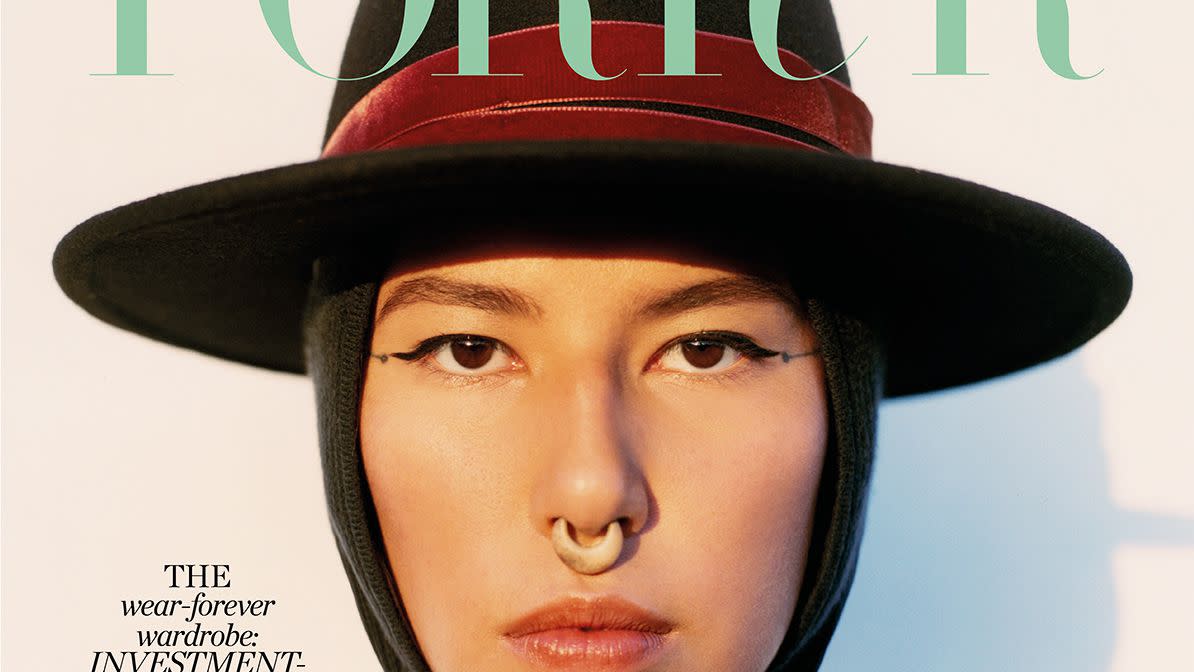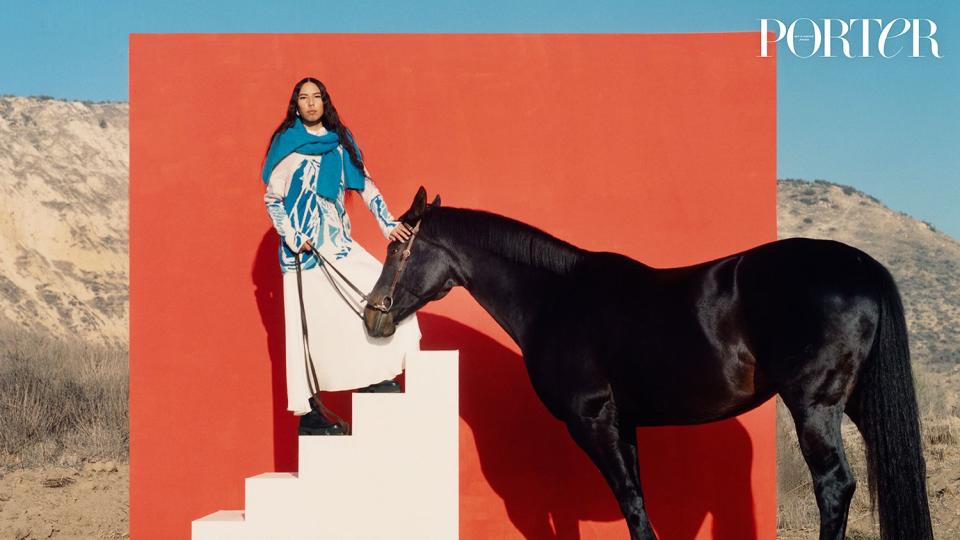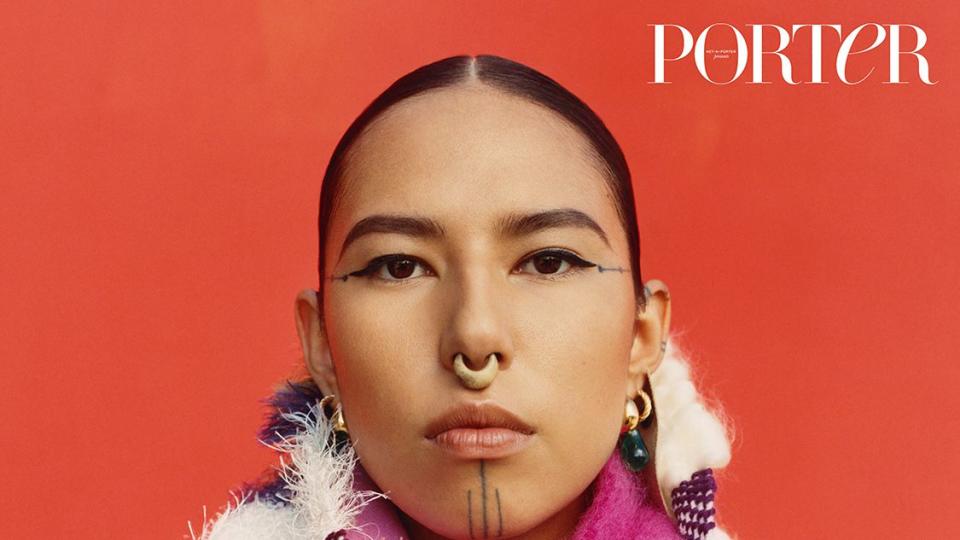Quannah Chasinghorse on Lack of Indigenous Representation, Feeling Not 'Pretty Enough' Growing Up

- Oops!Something went wrong.Please try again later.
Camila Falquez/PORTER/NET-A-PORTER.COM
Quannah Chasinghorse is breaking barriers after not seeing herself represented in the fashion industry as a child.
The Indigenous model and land protector, 19, said she "never felt beautiful" as she got candid about growing up without representation in this week's cover interview for Net-a-Porter's digital title Porter.
"Growing up, I got bullied for having a bump on my nose, for having high cheekbones… I never felt beautiful. The beauty standards that were being upheld by society, by these kids, I didn't think I had what it took to be a model; it was a dream," she said. "I thought it was so far out of reach that it would never happen.
RELATED: Model Quannah Chasinghorse Says She Felt 'Really Lonely' at the Met Gala: 'No One Cared'
"I didn't think that was what people wanted on the cover of magazines, because the lack of representation made us think and feel that way; we weren't good enough or pretty enough… Lack of representation really does take a toll on you," Chasinghorse added.
A descendant of the Hän Gwich'in (from Alaska and Canada) and Oglala Lakota (from South Dakota) people, Chasinghorse previously opened up about her Yidįįłtoo, a traditional face tattoo done by her people. Having received her first ink at age 14, she was reluctant to talk about it until she knew how to defend it.

Camila Falquez/PORTER/NET-A-PORTER.COM
"Because I knew that if people knew I got [it] younger, they wouldn't have accepted me. Like, 'A 12-year-old with a tattoo on her face?'" Chasinghorse told Elle earlier this month.
Although it was once tradition for a Hän Gwich'in girl to receive a Yidįįłtoo between the ages of 12 and 14 as a rite of passage into womanhood, missionaries banned the practice in the 19th and 20th centuries. Chasinghorse was the first girl in her tribe to bring back the tradition, with her mother Jody Potts-Joseph doing the honors.
Chasinghorse, who is also a fourth-generation land protector for the Arctic National Wildlife Refuge in Alaska, has catapulted into the spotlight, walking the runways for Prabal Gurung, Chloé and Chanel (among others).

Camila Falquez/PORTER/NET-A-PORTER.COM
And although she turned heads at this year's Met Gala, Chasinghorse said she felt "really, really lonely" at the exclusive event, where she paid tribute to her Indigenous roots with her take on the gala's theme, In America: A Lexicon of Fashion.
"It was such a weird space to be in. I remember standing there and looking at everyone and feeling so alone," she told Insider in November, adding: "People are there for themselves and it shows."
RELATED VIDEO: Reservation Dogs' D'Pharaoh Woon-A-Tai Advocates for the Future of Indigenous People in Hollywood
"All my ancestors were with me in that moment. They walked the red carpet with me. That made me feel more powerful," Chasinghorse said.

